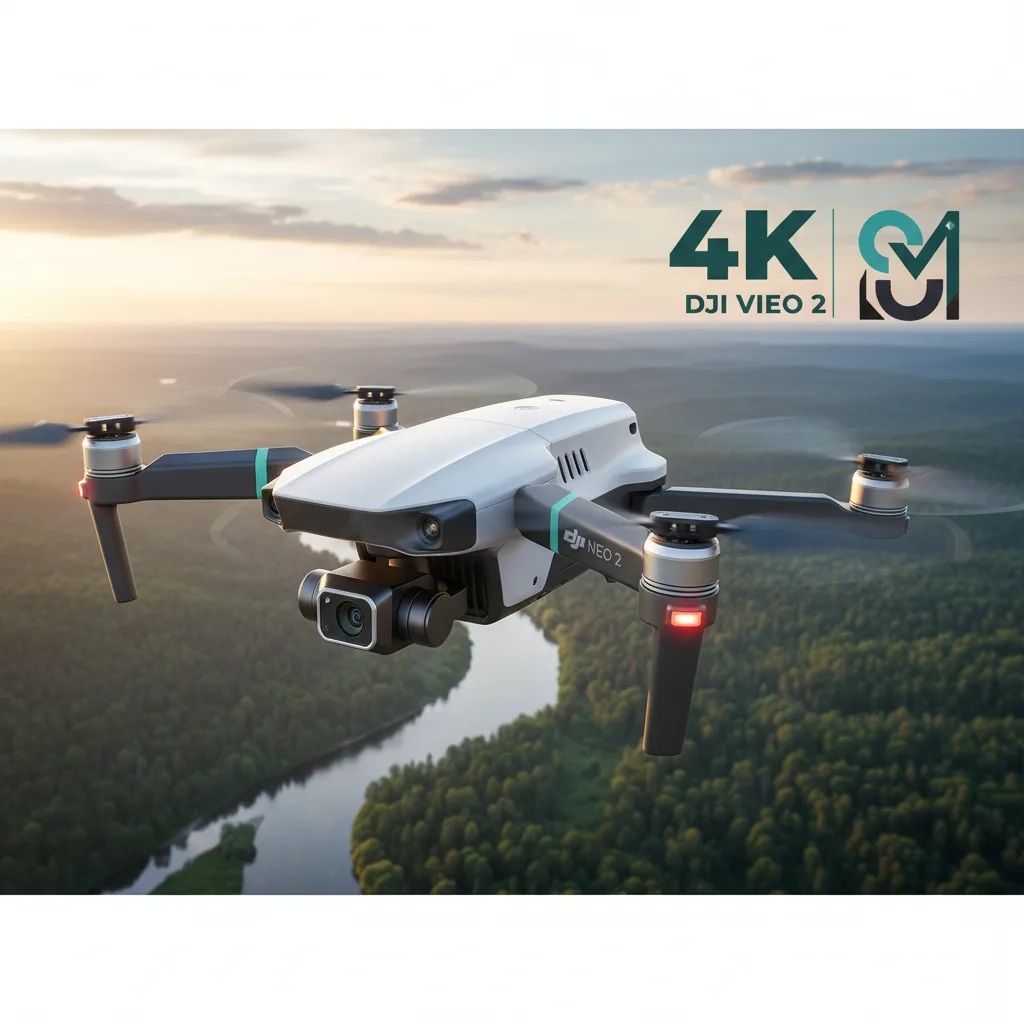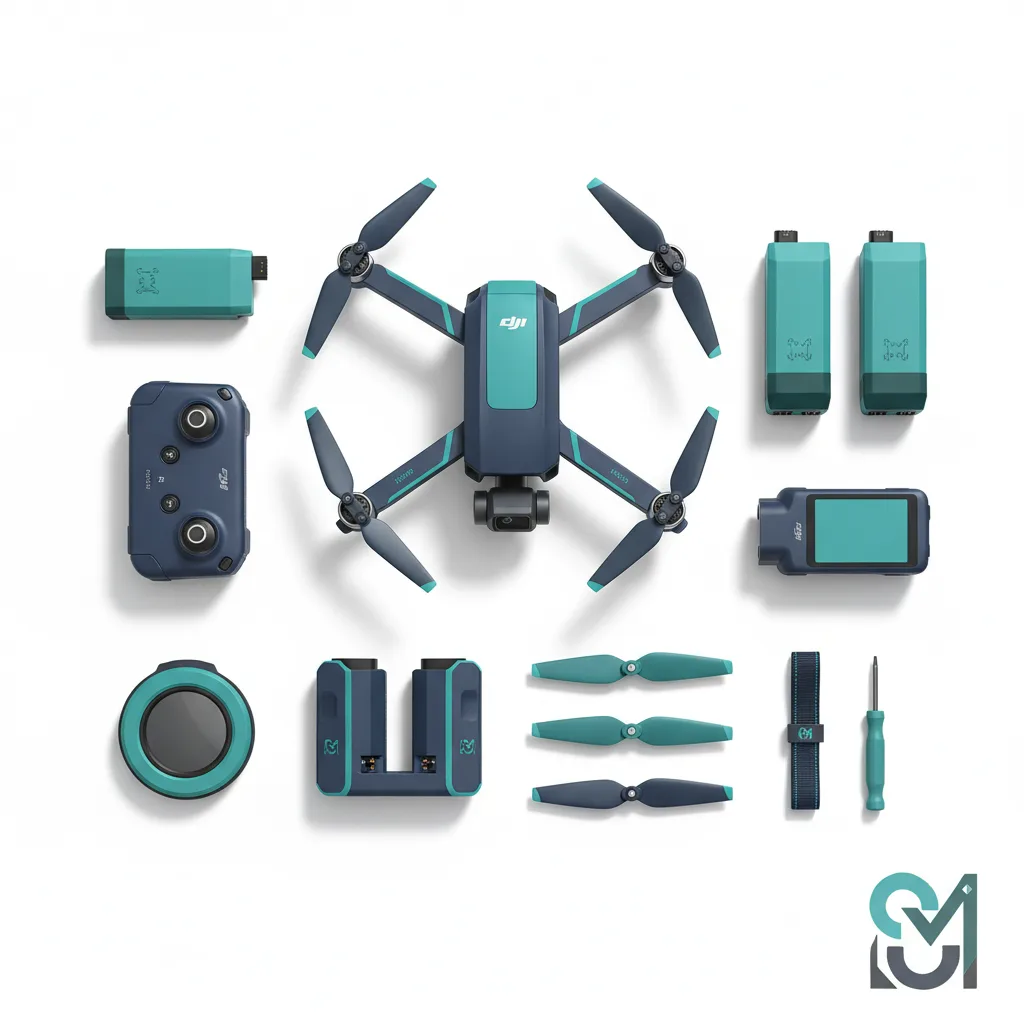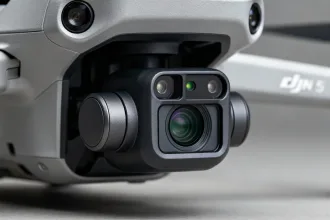The DJI Neo 2 has revolutionized the entry-level drone market by combining premium features with exceptional portability and ease of use. Released in November 2025, this ultracompact drone weighs just 151 grams—making it registration-free in most regions—while packing sophisticated capabilities that rival drones costing twice as much. Whether you’re a beginner drone pilot, a content creator seeking mobile footage solutions, or a vlogger looking to capture stunning aerial perspectives without complex equipment, the DJI Neo 2 delivers professional-grade performance in a pocket-sized package.
This comprehensive guide explores everything you need to know about the DJI Neo 2, from its revolutionary features and technical specifications to practical use cases, performance metrics, and honest assessments of both strengths and limitations. We’ll examine how the Neo 2 compares to competitors, evaluate its suitability for various applications, and provide insights that will help you determine if this drone is the right choice for your aerial imaging needs.
Table of contents
- What is the DJI Neo 2? Understanding This Revolutionary Compact Drone
- DJI Neo 2 Key Features: What Sets It Apart from the Competition
- DJI Neo 2 Specifications: Technical Deep Dive
- DJI Neo 2 vs Original DJI Neo: What’s Changed?
- DJI Neo 2 vs Competitors: Market Positioning
- Real-World Performance: Flight Time, Range, and Battery Endurance
- DJI Neo 2 for Content Creators and Vloggers: Practical Applications
- Image Quality Analysis: Camera Performance Assessment
- Safety Features and Obstacle Avoidance: How Reliable?
- Pricing Analysis: Value Proposition and Bundle Options
- Practical Guide: Getting Started with Your DJI Neo 2
- Common Issues and Troubleshooting
- Pros and Cons: Honest Assessment
- Is the DJI Neo 2 Worth Buying? Final Verdict
- Conclusion: Redefining Accessible Drone Technology
What is the DJI Neo 2? Understanding This Revolutionary Compact Drone
The DJI Neo 2 represents a paradigm shift in the compact drone category. Succeeding the popular DJI Neo from 2024, the Neo 2 isn’t merely an incremental upgrade—it’s a substantial leap forward in technology, performance, and user experience. This 151-gram aircraft combines the accessibility of gesture-controlled flight with the sophistication of advanced autonomous systems, making professional aerial photography and videography accessible to anyone.
What makes the DJI Neo 2 truly revolutionary is its combination of features that were previously exclusive to more expensive drone models. The integration of omnidirectional obstacle sensing, forward-facing LiDAR, and a full 360-degree infrared sensing system on a palm-sized drone represents a significant achievement in aerospace miniaturization. Additionally, the Neo 2’s ability to record in 4K at up to 100 frames per second gives creators a tool that punches far above its weight class.
DJI has clearly designed the Neo 2 with solo content creators, travelers, beginners, and vloggers in mind. The drone launches from your palm and lands in your hand, requires zero complex setup procedures, and can be flown entirely through intuitive gesture controls or voice commands. Yet, for users who want more advanced control, it’s fully compatible with multiple DJI controllers and the DJI Goggles N3 for immersive FPV flight experiences.

DJI Neo 2 Key Features: What Sets It Apart from the Competition
Omnidirectional Obstacle Sensing with LiDAR Technology
One of the most impressive features of the DJI Neo 2 is its full 360-degree obstacle avoidance system. Unlike many competitors that offer only downward or forward-facing obstacle detection, the Neo 2 continuously monitors its surroundings in all directions using a sophisticated combination of:
- Omnidirectional monocular vision system for general obstacle detection
- Forward-facing LiDAR for precise distance measurement and low-light detection
- Downward infrared sensors for altitude awareness and landing surface assessment
This comprehensive safety system means the Neo 2 can navigate complex environments like dense forests, crowded urban areas, and indoor spaces with significantly reduced crash risk. The LiDAR technology is particularly valuable because it provides accurate obstacle detection even in low-light conditions where traditional vision systems would fail—a critical advantage for golden hour photography, indoor flights, or overcast days.
Advanced 4K Camera System with 100fps Capability
The DJI Neo 2 features a 12-megapixel 1/2-inch CMOS sensor paired with an upgraded 2-axis mechanical gimbal that represents a major improvement over the original Neo. This camera system delivers:
- 4K video recording at 60fps for standard cinematic footage
- 4K at 100fps in slow-motion mode for dramatic effect and smooth slow-motion sequences
- 2.7K vertical video recording at 60fps, optimized for Instagram Reels, TikTok, and YouTube Shorts
- 12MP still photography in JPEG format with improved color accuracy and detail
- f/2.2 aperture (wider than the original Neo’s f/2.8) for superior low-light performance
The 2-axis gimbal is crucial to the camera’s improvement. Where the original Neo’s single-axis gimbal struggled during lateral movements and top-down shots, the Neo 2’s dual-axis stabilization keeps the horizon perfectly level during banking maneuvers. Combined with RockSteady electronic image stabilization, the Neo 2 produces smooth, cinema-quality footage even when flown aggressively.
Palm Takeoff and Landing: Flight Reimagined
The palm takeoff and landing feature isn’t just convenient—it’s transformative. Users can literally place the Neo 2 in their hand, press a button, and the drone launches automatically. Upon landing, the drone returns to your palm with pinpoint accuracy. This feature eliminates numerous barriers to drone usage:
- No launch area required: You can fly from beaches, rocks, boats, or other locations where traditional landing pads are impossible
- Instant capture: Quicker deployment means you never miss spontaneous moments
- Safety: Landing directly in your hand eliminates the risk of landing in water or difficult terrain
- Minimalist travel: No need to carry landing pads or search for flat surfaces
For vloggers, travelers, and outdoor enthusiasts, this feature alone justifies the investment.
Multiple Control Methods for Every User Type
The DJI Neo 2 offers unprecedented flexibility in control options, accommodating different user preferences and skill levels:
- Gesture Control: Wave your hand, point, or make specific gestures to command the drone
- Voice Control: Issue spoken commands to activate specific flight modes
- Palm Launch/Landing: One-button operation from your hand
- Mobile App Control: Full control through the DJI Fly smartphone application
- RC-N3 Controller: Traditional remote control for extended range and precise manipulation
- Motion Controller: For hands-free control gestures
- FPV Goggles: Immersive first-person flight experience with compatible goggles
This modular approach to control means the Neo 2 grows with you as a pilot. Beginners start with gesture control, while enthusiasts can eventually add controllers and goggles for more advanced flying styles.
Intelligent Flight Modes for Effortless Content Creation
The DJI Neo 2 includes a comprehensive suite of automated flight modes designed to simplify professional footage capture:
Follow Modes:
- ActiveTrack: Automatically follows your subject at speeds up to 12 m/s (40 km/h)
- Cycling Track: Optimized tracking for bicycles and moving subjects
- Skiing Track: Specialized mode for snow sports
- Spotlight: Keeps the subject centered while the drone moves
- Point of Interest: Circles around a fixed location
Creative Modes:
- SelfieShot: Automatically adjusts framing for waist-up, full-body, or group shots
- Dolly Zoom: Creates the famous “Hitchcock effect” with professional camera movements
- MasterShots: Captures multiple angles and automatically edits them into a finished video with music
- QuickShots: Pre-programmed flight patterns including Dronie, Helix, Rocket, Circle, and Boomerang
- Vertical Shooting: Perfectly composed 2.7K video for social media vertical formats
The new subject-switch gesture is particularly innovative—when a second person shows their hand to the camera, the Neo 2 automatically switches tracking focus to that person. This enables seamless vlogs featuring multiple subjects without manual intervention.
Extended Flight Time and Enhanced Power
The DJI Neo 2 achieves up to 19 minutes of flight time—one additional minute beyond the original Neo, achieved through better motor efficiency and a larger 1,606 mAh battery. This extended endurance is crucial for content creators who need multiple shots and complex tracking sequences without battery swaps.
Additional power improvements include:
- Faster acceleration: Ascent speed up to 5 m/s (compared to the original’s slower performance)
- Maximum tracking speed: 12 m/s—nearly double the original’s 8 m/s capability
- Wind resistance: Level 5 rating (up to 10.7 m/s), significantly improved from the original’s Level 4
- Powerful motors: Bigger rotors and motors enable more aggressive and responsive flight
Massive Internal Storage Upgrade
The Neo 2 includes 49GB of internal storage—more than double the original’s 22GB. This substantial upgrade addresses a major limitation of the original model and enables:
- 105 minutes of 4K/60fps footage before storage capacity is reached
- 175 minutes of 4K/30fps footage
- 241 minutes of 1080p/60fps footage
- Rapid wireless transfer: QuickTransfer speeds of up to 80 MB/s via WiFi eliminates the need for cables
For day-long shoots or multi-user scenarios, the expanded storage capacity is a game-changer that reduces the need for mid-shoot file transfers.

DJI Neo 2 Specifications: Technical Deep Dive
Physical Specifications and Design
| Specification | Value |
|---|---|
| Weight | 151 grams (160g with DJI Digital Transceiver) |
| Dimensions (Folded) | 13.0 × 9.0 × 5.0 cm |
| Color Options | White, Light Gray |
| Build Material | Durable plastic with rubberized antenna wraps |
| Propeller Guards | Full coverage, removable for lighter flights |
| Sensor Type | Omnidirectional monocular vision + Forward LiDAR + Downward infrared |
Camera and Imaging Specifications
| Specification | Value |
|---|---|
| Image Sensor | 12MP, 1/2-inch CMOS |
| Lens | FOV: 119.8°, Equivalent: 16.5mm, Aperture: f/2.2 |
| Focus Range | 0.7m to ∞ |
| Maximum Photo Resolution | 12MP (4000 × 3000 4:3 / 4000 × 2250 16:9) |
| Photo Formats | JPEG only (no RAW) |
| ISO Range | 100-12800 |
| Video Codecs | H.264/H.265 |
| Video Formats | MP4 |
| Maximum Video Bitrate | 80 Mbps |
| Video Recording Options | 4K@60fps, 4K@100fps, 2.7K@60fps (vertical) |
Performance Specifications
| Specification | Value |
|---|---|
| Flight Time | Up to 19 minutes (no wind) |
| Maximum Speed | 5 m/s (Sports Mode) |
| Wind Resistance | Level 5 (10.7 m/s) |
| Maximum Altitude | 400m AGL |
| Transmission Technology | OcuSync 4 |
| Transmission Distance | WiFi: 500m, O4: 6km (CE)/10km (FCC) |
| Control Methods | Gesture, Voice, App, RC-N3, Motion Controller |
| Tracking Speed | Up to 12 m/s (ActiveTrack) |
Battery Specifications
| Specification | Value |
|---|---|
| Capacity | 1,606 mAh |
| Voltage | 7.6V |
| Battery Type | Intelligent Flight Battery |
| Charging Time | ~60 minutes (standard charger) |
| Storage Capacity | 49GB internal (exFAT format) |
| Maximum File Transfer Speed | 80 MB/s (WiFi) |
DJI Neo 2 vs Original DJI Neo: What’s Changed?
The upgrade from the original DJI Neo to the Neo 2 represents significant improvements across multiple dimensions. Here’s a detailed comparison:
| Feature | DJI Neo 2 | DJI Neo (Original) |
|---|---|---|
| Weight | 151g | 135g |
| Flight Time | 19 minutes | 18 minutes |
| Camera Gimbal | 2-axis | 1-axis |
| Video Recording | 4K/100fps | 4K/30fps |
| Aperture | f/2.2 | f/2.8 |
| Internal Storage | 49GB | 22GB |
| Obstacle Avoidance | Omnidirectional | None |
| LiDAR Sensor | Forward-facing | None |
| Tracking Speed | 12 m/s | 8 m/s |
| Wind Resistance | Level 5 | Level 4 |
| Control Display | Yes (on aircraft) | No |
| Subject Switch | Gesture-based | Manual |
The most transformative upgrades are the addition of omnidirectional obstacle sensing with LiDAR, the 2-axis gimbal (which dramatically improves video quality), and the increased internal storage that roughly doubles recording capacity.
DJI Neo 2 vs Competitors: Market Positioning
DJI Neo 2 vs DJI Flip
The DJI Flip presents a different value proposition. While the Flip features a larger 48MP sensor on a 1/1.3-inch CMOS (superior to the Neo 2’s 12MP 1/2-inch sensor), the Neo 2 offers superior safety features with its omnidirectional obstacle avoidance versus the Flip’s 3D infrared system. The Flip provides longer flight time (31 minutes vs 19 minutes), but the Neo 2’s superior tracking speed (12 m/s vs unspecified) and LiDAR make it better for active subjects and challenging environments.
Winner for most users: DJI Neo 2 (better all-around package for beginners and vloggers)
DJI Neo 2 vs DJI Mini 3
The DJI Mini 3 (248g, just below the 250g threshold) offers an older camera system with primarily downward obstacle detection and significantly longer battery life (38 minutes). However, the Neo 2’s modern 4K/100fps capability, superior tracking algorithms, and omnidirectional sensing make it more suitable for dynamic content creation. The Mini 3 is bulkier and more expensive while offering less advanced autonomous features.
Winner for most users: DJI Neo 2 (more advanced features, superior tracking, better value)
DJI Neo 2 vs HoverAir X1
The HoverAir X1 is perhaps the closest competitor, offering similar palm takeoff functionality and beginner-friendly design. However, it lacks the Neo 2’s obstacle avoidance, has limited storage, and offers fewer control options. The Neo 2’s LiDAR and tracking capabilities significantly outperform the HoverAir X1.
Winner for most users: DJI Neo 2 (comprehensive feature set and safety)
Real-World Performance: Flight Time, Range, and Battery Endurance
While DJI advertises up to 19 minutes of flight time, real-world testing consistently reveals shorter actual flight times depending on usage patterns:
Flight Time Testing Results
Hovering in Wind: Real-world tests show approximately 8-10 minutes of actual flight time when hovering in moderate wind conditions—roughly half the advertised time. This is normal for small drones, as hovering requires constant altitude compensation against wind.
Active Tracking: When using ActiveTrack or following subjects, expect 10-14 minutes of real flight time. The more aggressive the maneuvering and the faster the subject movement, the faster battery drain.
Aggressive Flying: Racing around parks or performing high-speed maneuvers reduces flight time to 8-12 minutes, depending on maneuver intensity.
Indoor Flying: In calm, windless indoor environments with minimal gimbal compensation, you may achieve closer to the advertised 15-19 minutes.
Range and Transmission
The DJI Neo 2 supports:
- WiFi connectivity: Up to 500 meters for basic control
- OcuSync 4: Up to 6km (CE) / 10km (FCC) for advanced transmission with controllers
In practical testing, stable control through the mobile app typically operates reliably to about 300-400 meters in urban environments with some wireless interference.
DJI Neo 2 for Content Creators and Vloggers: Practical Applications
Social Media Content Creation
The DJI Neo 2 is engineered specifically for social media creators. Its vertical shooting mode captures 2.7K footage in 9:16 format, perfectly optimized for Instagram Reels, TikTok, and YouTube Shorts without cropping or quality loss. The drone’s compact size and immediate deployability mean you can capture spontaneous moments that traditional cameras can’t reach.
Ideal for:
- Travel vlogging with minimal equipment
- Quick social media clips during outdoor adventures
- Multi-angle shot sequences without assistance
- Real-time engagement capture (your reaction, your subject’s reaction)
Selfie and Personal Vlogging
The improved SelfieShot mode allows creators to capture group photos and waist-up/full-body shots automatically. The subject-switch gesture means you can seamlessly transition from filming yourself to filming a friend—all without stopping recording or manually adjusting settings.
Action and Adventure Content
With its 12 m/s tracking speed and improved responsiveness, the Neo 2 excels at following cyclists, skiers, runners, and other active subjects. The cycling and skiing tracking modes optimize parameters for these specific sports, automatically handling camera adjustments so the pilot can focus on capturing the action.
Travel Documentation
For travel vloggers, the Neo 2 is the perfect companion. Its minimal weight and instant palm deployment mean you can capture locations without needing dedicated launch areas. The 49GB internal storage and 80 MB/s WiFi transfer enable rapid file offloading to smartphones for immediate social media posting.
Image Quality Analysis: Camera Performance Assessment
Video Quality in Good Light
In daylight conditions, the Neo 2 produces excellent video quality for its class. The upgraded 2-axis gimbal significantly improves stabilization compared to the original Neo, resulting in smooth, professional-looking footage. The f/2.2 aperture captures approximately 60% more light than the original’s f/2.8, improving detail retention and reducing noise.
Strengths:
- Excellent color saturation and natural white balance
- Impressive detail and sharpness
- Minimal jello or gimbal artifacts
- Effective stabilization during movement
Limitations:
- Fixed aperture prevents depth-of-field adjustment
- Slight oversharpening at default settings (adjustable only with controller)
- No RAW video format for post-production flexibility
Low-Light Performance
The Neo 2’s low-light performance is one area where compromises become apparent. While the f/2.2 aperture helps, the small sensor inherently limits light gathering capability. At sunset or in overcast conditions, noise becomes visible at 4K resolution, and ISO must be pushed to 12,800, introducing visible grain.
Recommendation: For low-light filming, maintain higher frame rates (4K/60fps is cleaner than 4K/30fps) and post-process carefully to manage noise.
Slow-Motion Capability
The 4K/100fps slow-motion mode is genuinely impressive for a drone this size. Captured footage remains clear and detailed, with effective stabilization throughout. This capability opens creative possibilities for impact moments, water droplets, athletic movements, and other subjects that benefit from temporal stretching.
Safety Features and Obstacle Avoidance: How Reliable?
Omnidirectional Sensing System Capabilities
The Neo 2’s comprehensive obstacle avoidance system significantly reduces crash risk compared to competitors lacking this feature. However, users should understand its limitations:
Highly Reliable For:
- General obstacle detection at moderate speeds
- Prevention of most accidental collisions during autonomous modes
- Low-light operation (thanks to LiDAR)
- Forward-facing obstacles when flying toward objects
Limitations to Understand:
- Lateral movement detection: When moving sideways, obstacle detection is less instantaneous than forward-facing detection
- Speed dependency: At maximum tracking speeds (12 m/s), the detection system may not react quickly enough to rapidly-approaching objects
- Thin objects: Very thin branches or wires might not be reliably detected
- Fine weather conditions: Rain, heavy fog, or snow can degrade sensor effectiveness
- Speed around obstacles: For safe maneuvering between trees or structures, pilot must reduce speed significantly
Propeller Guard Design
The DJI Neo 2’s full-coverage propeller guards significantly reduce injury risk and protect the aircraft during low-speed collisions. The guards are removable for users seeking minimum weight for specific applications.
Pricing Analysis: Value Proposition and Bundle Options
DJI Neo 2 Pricing (Global)
| Bundle | UK Price | European Price | Canadian Price | Australian Price |
|---|---|---|---|---|
| Drone Only | £209 | €239 | $229 USD | $410 AUD |
| Fly More Combo | £289 | €329 | $309 USD | N/A |
| Fly More Combo (RC-N3) | £349 | €399 | $399 USD | N/A |
| Motion Fly More | £509 | €579 | $549 USD | N/A |
Note: The DJI Neo 2 is not officially available in the United States, though some international retailers may ship to US addresses.
Bundle Recommendations
For Beginners: The Drone Only option is perfect if you’re just starting and want to learn gesture control before investing in controllers.
For Extended Sessions: The Fly More Combo ($289-329) adds three extra batteries and a charging hub, extending your total flight time to approximately 60 minutes and enabling all-day shooting sessions with proper planning.
For Advanced Control: The Fly More Combo with RC-N3 ($349-399) adds a traditional remote controller, giving you extended range (6-10km) and precise manual control while maintaining the ability to use gesture control.
For FPV Enthusiasts: The Motion Fly More Combo ($509-579) is the complete package, including FPV goggles for immersive first-person flight experiences and advanced motion control capabilities.
Practical Guide: Getting Started with Your DJI Neo 2
Unboxing and Initial Setup
- Power On: Press the power button once to check battery status
- Install Gimbal Protector: Gently press the protective gimbal cover
- Download DJI Fly: Install the official DJI app on your smartphone
- Connect to App: Use the “Connection Guide” in the app to register and activate your Neo 2
- Update Firmware: Always update to the latest firmware before your first flight
- Practice Gestures: Familiarize yourself with gesture controls before taking off
Flight Preparation Checklist
- Charged battery (check LED indicators showing full charge)
- Clear flight area (minimum 3 meters in all directions)
- Smartphone with DJI Fly app installed
- Weather conditions acceptable (not raining, wind under 10.7 m/s)
- Propeller guards installed for first flights
- Calibrate compass if flying in a new location
- Optimal lighting (avoid direct sun in camera lens)
First Flight Best Practices
- Start Indoors: Fly in a large indoor space (gymnasium, warehouse) to practice gesture control
- Master Takeoff: Practice palm launches and hand landings multiple times
- Simple Maneuvers: Begin with basic height adjustments before attempting tracking
- Experiment with Modes: Try each flight mode individually to understand their behaviors
- Review Footage: Immediately watch recorded footage to assess framing and stabilization
- Gradual Complexity: Progress to advanced features (tracking, creative modes) only after comfortable with basics
Common Issues and Troubleshooting
Battery Drain Faster Than Advertised
Cause: Wind conditions, aggressive maneuvering, continuous gimbal compensation
Solution: Fly in calm conditions for first flights; reduce gimbal movement through app settings
Connection Drops or Signal Loss
Cause: Interference from WiFi networks, physical obstacles, distance exceeding capability
Solution: Maintain line-of-sight; fly closer during initial flights; update firmware
Obstacle Avoidance Failures
Cause: Flying too fast near obstacles; sensor limitations with thin objects
Solution: Reduce speed when approaching objects; test avoidance system in safe areas first
Video Files Corrupted During Transfer
Cause: WiFi disconnection during file transfer; app crash
Solution: Transfer files over USB-C cable directly; use smaller batches of files initially
Gimbal Instability or Jello Effect
Cause: Defective gimbal; outdated firmware; vibration from propellers
Solution: Update firmware immediately; ensure propellers are properly seated; contact support if persistent
Pros and Cons: Honest Assessment
Advantages
✅ Exceptional Value: Premium features at an accessible price point significantly lower than competitors
✅ Beginner-Friendly: Gesture and voice control eliminate learning curve for new pilots
✅ Advanced Safety: Omnidirectional obstacle avoidance with LiDAR is rare at this price
✅ Content Creator Focus: Features like vertical shooting and subject switching directly address social media needs
✅ Portable: 151-gram weight and palm-size design mean it goes everywhere
✅ 4K/100fps Capability: Professional-grade slow-motion recording in a compact package
✅ Extended Storage: 49GB internal storage reduces mid-shoot file transfers
✅ Multiple Control Options: Grows with your skills, from gesture to FPV goggles
✅ Rapid WiFi Transfer: 80 MB/s transfer speed enables immediate social media posting
Disadvantages
❌ Real Battery Life: Actual flight time (8-14 minutes) significantly lower than advertised 19 minutes
❌ Fixed Aperture: f/2.2 cannot be adjusted; limits creative depth-of-field control
❌ JPEG Only: No RAW photo format limits post-processing flexibility
❌ Small Sensor: 1/2-inch CMOS limits low-light performance compared to larger sensors
❌ No ND Filters: Cannot attach neutral density filters for exposure control
❌ Proprietary Battery: Non-interchangeable batteries; must purchase DJI-branded replacements
❌ Storage Limitations: 49GB fills quickly on extended shoots; requires frequent WiFi transfers
❌ Altitude Ceiling: Cannot exceed 400ft AGL in certain regions; somewhat arbitrary limitation
❌ Obstacle Detection Speed: At maximum speeds, detection may not react quickly enough
❌ US Market Absent: No official availability in the United States
Is the DJI Neo 2 Worth Buying? Final Verdict
The DJI Neo 2 is absolutely worth purchasing if:
- You’re a beginner drone pilot seeking to learn with a safe, forgiving aircraft
- You’re a content creator requiring portable, high-quality video capabilities
- You’re a vlogger needing spontaneous footage without complex equipment
- You travel frequently and value minimalist, pocket-sized solutions
- You want professional-grade obstacle avoidance without high-end pricing
- You prioritize ease of use and intuitive controls over maximum manual flexibility
Consider alternatives if:
- You require maximum battery life (30+ minutes per charge)
- You need advanced color grading capabilities (RAW video/photo formats)
- You’re based in the United States with limited international shipping access
- You require extreme low-light performance (professional cinematography)
- You want depth-of-field control through adjustable aperture
Conclusion: Redefining Accessible Drone Technology
The DJI Neo 2 represents a watershed moment in consumer drone technology. By democratizing advanced features like omnidirectional obstacle avoidance, LiDAR sensing, and 4K/100fps video recording, DJI has created a tool that empowers creators, adventurers, and enthusiasts without technical expertise to capture professional-quality aerial content.
The Neo 2’s combination of portability, intuitive controls, and sophisticated autonomous features makes it the strongest entry-point drone available today. While real-world battery life falls short of marketing claims and certain creative limitations exist, these compromises are acceptable given the price point and intended use case.
For solo content creators, travelers, vloggers, and beginner pilots, the DJI Neo 2 delivers exceptional value. It’s the drone that proves advanced technology doesn’t require complexity—it simply requires smart, user-focused engineering.
Rating: 9/10 – Exceptional value with genuinely useful features and reliable performance, with minor limitations that don’t significantly impact the target user experience.








